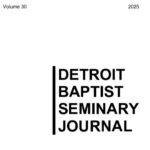Summer Reading: History that Reads Like a Novel
Each year I look forward to Al Mohler’s summer reading suggestions. His lists contain just the kind of books I enjoy reading for recreation. Unfortunately, although Mohler has introduced me to a number of new authors, I’ve never made it through one of his summer reading lists in its entirety. With that struggle in mind, I’d like to offer up a short list of history books that I’ve enjoyed in the past couple of years. None of the authors are church historians, but each has written a number of outstanding historical works, and each has managed to land one or more books on the New York Times best seller list. If you’re looking for a couple of books to take on vacation this summer, consider leaving Hunger Games behind and instead try out one or two of these historical works that read like novels.
 Nathaniel Philbrick, Mayflower: A Story of Courage, Community, and War (Penguin, 2006)
Nathaniel Philbrick, Mayflower: A Story of Courage, Community, and War (Penguin, 2006)
All good historical writing centers around the answering of questions. In writing this book, Philbrick set out to answer the question: How did America begin? In order to answer that question he decided to trace the lives of those who sailed aboard the Mayflower and settled Plymouth Colony. In the opening pages, Philbrick describes the Pilgrims as follows:
They were a most unusual group of colonists. Instead of noblemen, craftsmen, and servants—the types of people who had founded Jamestown in Virginia—these were, for the most part, families—men, women, and children who were willing to endure almost anything if it meant they could worship as they pleased (p. 4).
Philbrick follows the Pilgrims from England to Leiden and then across the Atlantic to the New World. The story includes hardship, conflict with Indians, and amazing sacrifice, or as the subtitle puts it, “courage, community, and war.” In the epilogue, Philbrick points out that eventually “the Pilgrims came to be known not as they had truly been but as those of the Victorian era wished them to have been” (p. 354). This book is Philbrick’s attempt to cut through the legends and distortions which have grown up around the story of the Pilgrims in order to rediscover what they were really like.
 David McCullough, 1776 (Simon & Schuster, 2005)
David McCullough, 1776 (Simon & Schuster, 2005)
David McCullough is arguably the most widely known American historian alive today. In addition to writing several books that have made the NYT best seller list, McCullough has won numerous awards including two Pulitzer prizes and the Presidential Medal of Freedom (2006). Several years ago his biography of John Adams was turned into an HBO miniseries—an indication of just how popular his writing had become. And yet his writing is not widely read because he dumbs down his topic or plays loose with the facts of history. Rather, his writing is so appealing because he has evidently mastered his subject and he has the ability to craft an exceptionally compelling story. This book is one of his best.
The year 1776 stands as likely the most important in American history. It was a do or die time for the fledgling nation, and many observers thought the latter option was more likely. In this book, McCullough focuses much of his account on the doings of a soldier named George Washington. It was still more than a decade before Washington would become our nation’s first president, but as commander of the Continental army he was responsible for seeing that the Declaration made in Philadelphia remained something more than an idle claim. Reading McCullough’s account one is struck by the fact that the American Revolution repeatedly came so close to failing completely. Washington narrowly escaped capture on several occasions, and apart from a few very daring decisions the whole war effort might have been for nothing. McCullough weaves a grand tale that makes the book hard to set down. And along the way he paints an accurate and interesting picture of the struggles which led to the formation of a new nation.
 David Hackett Fischer, Washington’s Crossing (Oxford, 2004)
David Hackett Fischer, Washington’s Crossing (Oxford, 2004)
My first exposure to Fischer’s writings came early in my doctoral work when we were required to read his book Historians’ Fallacies. That book is the historical equivalent of D. A. Carson’s Exegetical Fallacies. And in fact, Fischer’s work was apparently the inspiration behind Carson’s book. While preparing to lead a discussion of Historians’ Fallacies, I decided to pick up one of the author’s own historical works. I chose Washington’s Crossing. In part, I was curious if Fischer could take such a seemingly well-known event and write a 500+ page book about it without boring his audience to pieces. I also wondered if the author who had discerned so many fallacies in the writings of others could produce solid historical work of his own. My discovery was resoundingly positive on both accounts.
From beginning to end, Fischer’s work is eminently readable and incredibly well researched. The book’s introduction is representative of Fischer’s creative approach. In the introduction, Fischer discusses Emanuel Leutze’s famous painting Washington Crossing the Delaware (1851). Like a modern-day Sherlock Holmes, Fischer points out the historical significance of various details in the painting. He also sheds light on a tiny sliver of art history in such a way that he makes art history seem like a remarkably fascinating subject.
Early in the body of the book, Fischer explains the process by which Washington was chosen to lead the Continental army. He writes,
When the Congress searched for a commander-in-chief of the army on June 15, 1775, Washington was not everyone’s first choice…. But Samuel Adams counted the votes and told his friends that “southern” delegates would support a Continental army only if a Virginian were to lead it. Washington was the available man: the only Virginian with experience of command and young enough to take the field. He was the only member of Congress who wore a uniform, and it suited him (p. 16).
Throughout the volume, Fischer depicts Washington as a humble and capable leader of men who was exceptionally genuine, occasionally daring, and ultimately principled enough to try to return to life as a “normal citizen” after the war. Of course, such was not to be the case for very long for the new nation soon found itself in need of a president who was a proven leader.
The story of the crossing itself is fascinating. It illustrates the extent to which the nation’s future seemingly hung by a thread at times. Although this book overlaps with McCullough’s work a little bit (the crossing of the Delaware took place on Christmas night, 1776), one could easily read the two books back-to-back without a hint of boredom. In a number of ways, the two books complement each other and together nicely fill out the early story of the American War for Independence.
 Peter Bernstein, Wedding of the Waters: The Erie Canal and the Making of a Great Nation (W. W. Norton, 2005)
Peter Bernstein, Wedding of the Waters: The Erie Canal and the Making of a Great Nation (W. W. Norton, 2005)
Unlike Fischer, Peter Bernstein (d. 2009) was not a historian by training. After graduating from Harvard with a degree in economics, Bernstein served in the U.S. Air Force and then taught at Williams College for several years. He also worked in asset management for more than two decades. Today, Bernstein is best known for popularizing the efficient market theory and for authoring more than a dozen books, most of which have to do with financial management or economic history. His book, Wedding of the Waters, is a fine example of the latter.
Bernstein’s book on the Erie Canal describes the construction of one of the first major infrastructure projects in America. In contrast to the books discussed above, Bernstein focuses less on the people involved in planning and building the Erie Canal, and he spends more time talking about the mechanical details of the project. Given his background in economics, one is not surprised that Bernstein emphasizes the enormous economic impact of the canal. For example, he writes,
That the canal would have an influence on the future of New York City was beyond question. But the influence was reciprocal. New York City’s vast port and diversified economy would have a dynamic impact on the towns and cities along the route of the Erie Canal…. The enduring success of the canal was not just in the marvel of a waterway linking Lake Erie and Buffalo with New York, nor was it only in the impressive economic development it motivated between Buffalo and the lands to the west of Lake Erie…. The Erie Canal would turn out to be the first great bridge between the inexhaustible supplies of grain from the midwestern United States and the inexhaustible demand for food from Europe (p. 365).
In light of its far-reaching impact, the construction of the Erie Canal is more than an isolated episode in the history of New York. It is also part of the story of early American expansion to the west and an example of how a seemingly mundane piece of infrastructure can play a role in shaping a society. Although slightly less absorbing than the other three books, Bernstein’s work is packed with fascinating information for anyone interested in how a relatively young nation expanded so quickly and eventually rose to become an economic powerhouse on the world stage.


